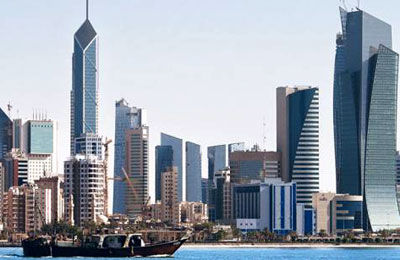
Kuwait ‘could see a budget surplus of $28bn’
Kuwait, July 20, 2013
An oil price of between $94 and $100 per barrel in the financial year 2013/14 could generate a budget surplus for Kuwait of between KD8 ($28 billion) and KD11 billion this fiscal year, a report said.
Although the closing accounts for FY2012/13 have not yet been released, the budget is expected to have recorded a massive surplus as oil prices averaged a record $107 per barrel for the fiscal year, added the latest Economic Update from the National Bank of Kuwait (NBK).
If spending comes in at 10-20 per cent below the government’s forecast, then last year’s budget surplus could end up between KD12.8 billion and KD15.0 billion before allocations to the Reserve Fund for Future Generations (RFFG), said NBK in the report.
The projections for the current fiscal year 2013/14 are linked to our three scenarios, which yield oil prices within the narrow range of $94 to $100 per barrel.
Preliminary budgeted spending for this fiscal year is set at KD21.2 billion. Assuming that spending comes in at an improved 5-10 per cent below budgeted expenditures, we project a surplus of between KD8.1 billion and KD11.2 billion before allocations to the RFFG.
This would equate to 17 per cent-23 per cent of forecast 2013 GDP, and would represent Kuwait’s 15th successive budget surplus.
Crude oil prices climbed higher in early July, after trading broadly flat through May and June. The price of Kuwait Export Crude (KEC) rose from a trough of $97 per barrel in late June to $103 by July 12. Similarly, Brent crude prices climbed by some $9 to $109 – its highest level since early April.
The recent rise in prices seems to have been largely driven by seasonal factors. The summer period typically sees a rebound in global oil demand as the holiday ‘driving season’ in the US boosts gasoline consumption and the Middle East region burns more crude to meet the surge in air-conditioning needs.
Oil demand outlook
Forecasts for global oil demand growth in 2013 have been largely unchanged over the past month, despite the weaker outlook for the global economy. The IEA still sees demand growing by 0.8 million bpd, or 0.9 per cent, compared to 1.0 per cent last year.
Meanwhile, the Center for Global Energy Studies expects global demand growth to come in at a slightly more pessimistic 0.7 million bpd, or 0.8 per cent. OECD demand is expected to fall by 0.5 million bpd (1.1 per cent), while non-OECD is seen rising by 1.3 million bpd (2.9 per cent). Forecasts for China have been trimmed to reflect lower growth, although Chinese demand is still expected to account for almost a half of the increase in global oil demand.
Oil supply outlook
Crude output of the Opec-11 (i.e. excluding Iraq) climbed for the second consecutive month, rising by 129,000 bpd to 27.4 million bpd in May. Production in Saudi Arabia saw its largest surge in 18-months – up 144,000 bpd to 9.4 million bpd.
Total Opec production (including Iraq) rose further to 30.6 million bpd – now 0.6 million bpd above Opec’s output ceiling. This came despite reduced output from Iraq, where production edged down slightly by 22,000 bpd to 3.1 million bpd in May. Although Iraqi output is expected to grow in coming months, more significant increases are likely to be derailed by ongoing delays in the start-up of key projects.
Non-Opec supplies are projected to increase by around 0.9 – 1.2 million bpd in 2013, of which at least one-quarter will come from Opec natural gas liquids (NGLs).
In total, global oil supplies are expected to increase by less than 1 million bpd in 2013, as cuts in Opec output partially offset stronger non-Opec supplies.
Price projections
Oil market fundamentals are expected to weaken in the second half of the year, though Opec production cuts are likely to prevent prices from falling too far below the organization’s unofficial $100 target level.
Based on the CGES’s slightly more pessimistic view of a 0.8 per cent increase in global oil demand, and a large 1.3 million bpd increase in non-Opec supplies partially offset by Opec production cuts, global oil inventories could rise by a modest 0.6 million bpd in 2013. In this case, the price of KEC slips only slightly in the second half of the year, but remains close to its 2Q13 average of $100 per barrel.
If, on the other hand, non-Opec supplies turn out 0.3 million bpd stronger than expected in 2H13, then Opec will need to make more aggressive production cuts in order to prevent a significant slide in oil prices. In this scenario, the price of KEC falls to around $95 per barrel in 2H13, and to below $90 per barrel early next year.
Alternatively, non-Opec supplies could come in 0.3 million bpd lower than expected in 2H13, allowing oil prices to be supported at above $100. In this case, the price of KEC hovers at just above $100 per barrel for the remainder of the year, before slipping slightly in 1Q14. Opec will still need to reduce output early next year in order to prevent oil prices from falling further. – TradeArabia News Service







